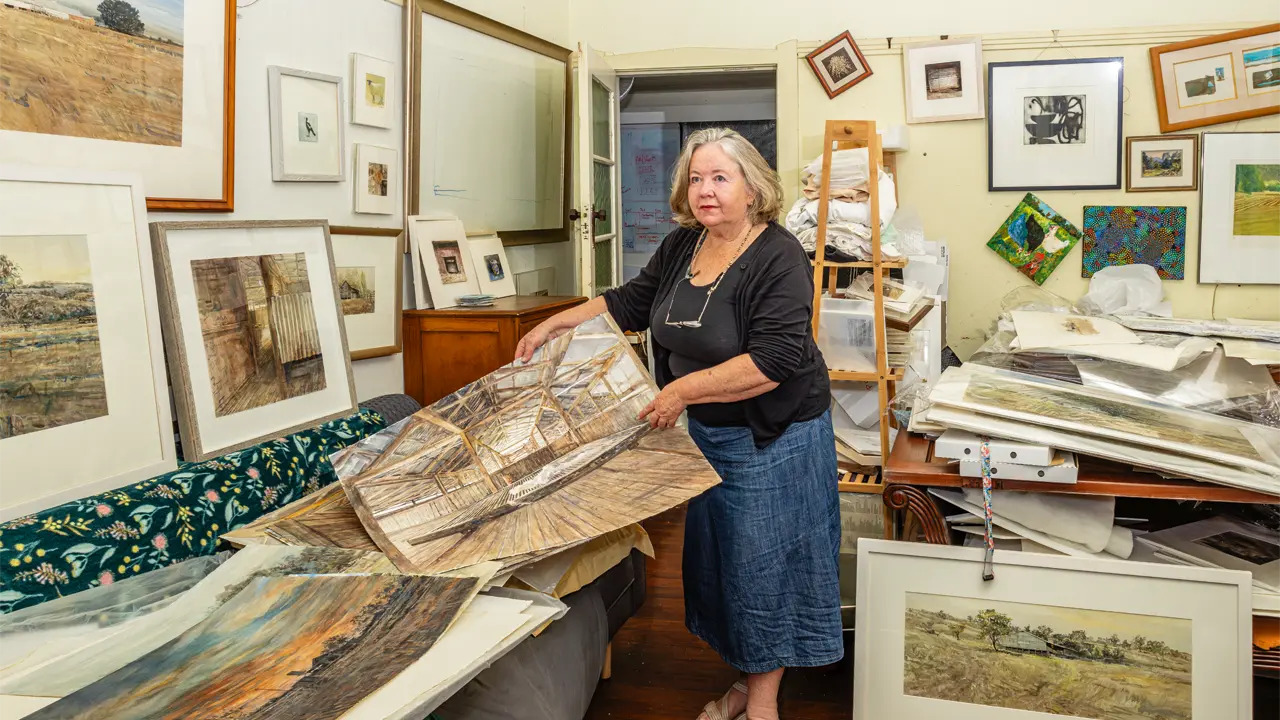Historic Werris Creek has been reborn with a museum and a monument honouring its rail heritage.
Story By John Dunn
The stainless steel sculptures, tall and slim and glinting in the sunlight, are easily recognisable. There’s a fettler, a shunter and a fireman, a signalman, a gatekeeper and a flag lady and they have all been expertly crafted by artist Dominique Sutton, whose work was showcased during the Sydney Olympic Games. Three metres high, they look down onto a specially landscaped amphitheatre beside the railway station of the tiny, historic town of Werris Creek, 480 kilometres north-west of Sydney. The sculptures are an arresting part of a recently developed and still-evolving complex that, uniquely, comprises both a rail museum and a memorial to those who have died in the service of Australian railways.
Werris Creek was a purpose-built rail centre and, as such, claims to be Australia’s first specific railway town. It dates back to 1877 when the state government decided that the great northern line needed a depot and a junction from where branches would run to the west and north-west, thus helping to open up and serve the rich pastoral areas further inland. An isolated bushland spot was chosen where the northern line at that time cut through George Single’s paddock, halfway between Quirindi and Tamworth. It was called Werris Creek, a variation of the Aboriginal name for the district, Weia Weia, meaning “stop here, rest awhile”. It became an appropriate translation because, in the years that followed, that’s exactly what people did. The town became the busiest rural freight base in the state as well as a key passenger junction as goods and people alike joined or left the main Sydney line destined to or coming from places like Gunnedah, Narrabri, Moree and many smaller settlements that were emerging.
By the early 1880s a magnificent railway station had appeared at Werris Creek. The New South Wales Rail Heritage Unit described it as “a remarkable building that could easily grace a city … yet, incongruously, a lonely citadel in the middle of the bush”. It boasted an impressive refreshment room in the Victorian Free Classical style built of rich, red bricks in tuck-pointed Flemish bond with crisp stucco embellishments, pronounced cornices with paired brackets and moulded, grouped windows. A grand cedar staircase led to a floor of bedrooms for those travellers who had time to sleep between their connections. Heritage further declared it was “not unlike a city bank … until it was covered in its first of many layers of soot”.
Eventually, a cross-country line was built from Binnaway near Coonabarabran to Werris Creek, thus linking the northern line to both the western and southern lines. The population soared to 2500 people as workers flocked to staff and service the countless trains that came and went during the day and throughout the night and Werris Creek became known as “the town that never sleeps”. But then, in the 1970s, came the introduction of diesel locomotives and the beginning of the centralisation of the rail system. The jobs of the tradesmen who serviced the steam era disappeared. The population halved as the rail jobs fell from 800 to 100. Down, too, plummeted the morale of the town as its heart and soul began to disappear. Even though passenger and freight trains still passed through Werris Creek, as they still do, it seemed destined to become yet another country town fading into oblivion.
But, in 1989, a committee led by Chris Holley – a former porter, shunter, guard and controller strongly supported by a band of fellow retired railmen such as veteran yard master Les Brown – vowed that Werris Creek would not die. Their determination led to the acceptance of a plan envisaged by Dr Stuart Sharp, a renowned officer with the former State Rail Heritage Unit, involving the creation of an Australian Railway Monument. For Chris and Les this was a chance to save their town and, at the same time, preserve its wonderful rail history.
This story excerpt is from Issue #65
Outback Magazine: June/July 2009









